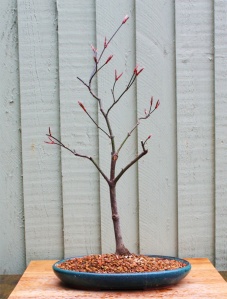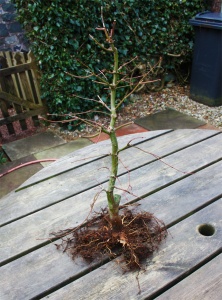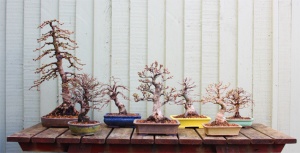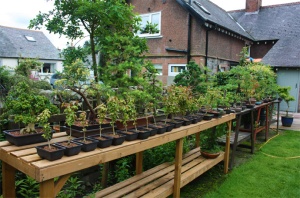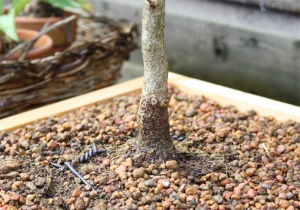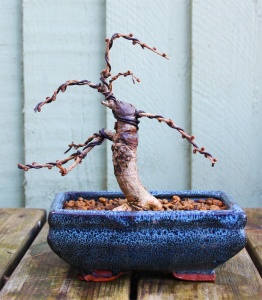I paid a visit to my friend Gerry’s garden today to help him get started with the seasonal work on his trees. Here are a few pictures of some of the trees that we worked on.
The first to be tackled was this tall larch.

I gave this tree to Gerry about a year ago because I felt that it would provide quite a few challenges for someone that’s new to the hobby. It’s quite a tall tree (36 inches high), it has a straight untapered trunk and the nebari needs a lot of work also.

After some discussion on the pros and cons of the material, we decided that we would first remove the tree from the pot and do what we could to improve the poor nebari. We discovered that the base of the trunk had sufficient roots to allow us to remove the large thick root which protruded to the rear. The removal of the soil also revealed a bend at the base of the trunk, which could be used to introduce movement into the otherwise straight trunk.
This is how the rear of the trunk looked, when the work was completed. Quite an improvement I think.

The other major problem that this tree had, was the long straight trunk without taper. To deal with this, we decided to chop the tree back to the 2 lowest branches and wired one up to form a new apex and upper trunk.
This is how it looks from the front, at the moment. The chop can be carved into profile at a later time.

This little deshojo maple, which was imported from Japan last year, needed a slight change of angle and a coarser grade of soil to suit the Scottish climate
Before

After

This variegated elm, which also came from Japan last year was pot bound and required substantial root reduction

A new pot and a simplified trunk line. This pot is a little larger than it needs but will allow the roots to spread and speed up the development of the branch structure









